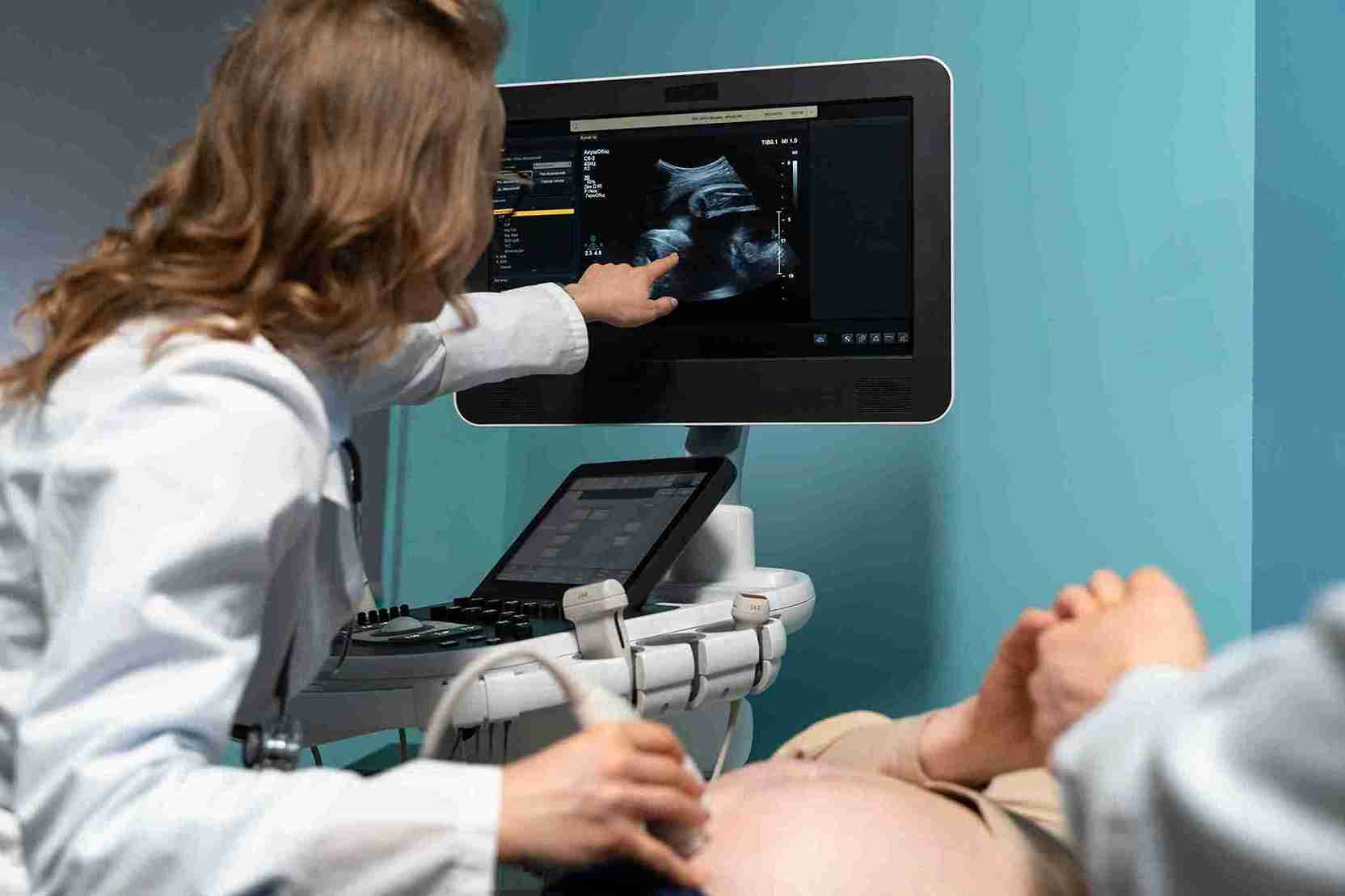
Nowadays, quite a few women experience fertility issues during their reproductive years. There are various reasons behind this, such as blocked fallopian tubes and abnormalities in the uterus. Specific tests are often necessary to make an accurate diagnosis. Among the tests recommended, the most effective and commonly prescribed one is hysterosalpingography (HSG).
Let’s take an in-depth look at the role HSG X-rays play in diagnosing fertility issues.

An HSG (hysterosalpingogram) is a special type of X-ray procedure used to examine the inside of the uterus and fallopian tubes. During the test, a special contrast dye is introduced into the uterus and fallopian tubes, allowing clear images to be captured. This procedure uses fluoroscopy, which creates real-time video images instead of static X-ray pictures. It helps identify potential issues in the reproductive system that may be affecting fertility, such as an irregular uterine shape or blockages in the fallopian tubes.
The HSG X-ray test has a specific time frame. It is performed during the first 15 days of your period before ovulation, which reduces the chance of menstruating or becoming pregnant during the test. This test is not performed during a pelvic infection or pregnancy.
A radiologist or reproductive endocrinologist performs this test. The X-rays are analysed and a report with findings is generated. Your gynaecologist recommends the next steps based on the report.
A doctor may prescribe this test when you have trouble becoming pregnant or have had multiple miscarriages. The HSG test can help your doctor gain insight into what might be causing these issues. Fertility issues may be caused by:
● Uterine scar tissues
● Fallopian tube blockage
● Uterine abnormalities or the irregular shape of the uterus; genetic or otherwise
● Polyps or uterine tumours
This test may also be ordered if you had tubal surgery or tubal ligation to check its success. A tubal ligation is a procedure in which the fallopian tubes are closed. This test helps confirm whether the tubes are properly closed. The test also checks the success of tubal reversal to determine whether the fallopian tube reopening is done correctly.
Some women may find this test painful, so their healthcare provider may prescribe pain medication. This should be taken an hour before the procedure. A sedative may also be prescribed to help calm their nerves. An antibiotic may be prescribed to prevent infection and taken before or after the test.
The test will be scheduled a week after you have your period, and is done to reduce the risk of infection and to make sure you are not pregnant. If you think you might be pregnant, inform the doctor, as this test is dangerous to the fetus. Also, if you have unexplained vaginal bleeding or PID, this test should not be performed.
Contrast dye is used for this X-ray test to distinguish certain tissues or organs from others. Let your healthcare provider know about any potential allergic reaction to contrast dye. Metal interferes with the X-ray machine, so jewellery must be removed before the test and left at home.
The procedure takes only a few minutes, and you can go home the same day. During the test, the healthcare provider will inject a contrast dye into the fallopian tube or uterus to record images on the X-ray.

You will be made to lie on the table with your legs open and knees bent as if having a pelvic exam. A fluoroscopy machine (that takes X-rays) will be placed above the table.
● The provider will insert a plastic tube with a balloon or a catheter into the uterus. Once inside the body, the balloon inflates to hold the tube for dye injection.
● A speculum is inserted into the vagina that allows access to the cervix.
● Once the dye is injected, the provider will draw out the speculum, and you will be asked to place your legs on the table.
● The provider will pump the dye slowly into the uterus while the technician operates the fluoroscopy over the pelvic region. There may be cramping at this point, and if there is a blockage in the fallopian tube, there may be a slight stretch.
● You may be asked to move to different positions to check the movement of the solution in the fallopian tubes.
● If there is no blockage, the dye will spread to the bowel and be absorbed by the body. If the tubes are blocked, there won’t be any spillage.
● Images are captured, after which the provider will remove the cannula from the body.
Mild discomfort or pain is typical both during and after the procedure. You may feel cramping or pain when the dye is inserted into the uterus. If the tubes are blocked, more cramping is felt and lasts a few hours after the procedure. Since the pain is mild, taking painkillers may ease the cramps.
After the HSG, some of the dye used in the procedure may drain from the vagina. Using a pantyliner or pad is recommended to manage this. The discharge may be sticky and contain traces of blood. You may also feel:
● Dizziness
● Cramps
● Upset stomach
● Light vaginal bleeding for a few days.
You can resume your activities after the procedure, depending on how you feel.
An HSG uses X-rays to create pictures, but the radiation used is minimal so the procedure is not risky. But in some cases, there may be complications like injury to the uterus, infection and an allergic reaction to the contrast dye.
Your doctor will assess your results and advise on the next steps. If there are issues like fallopian tube blockage, additional tests like laparoscopy are recommended to diagnose further and treat. Fertility treatments like IVF that do not need clear fallopian tubes are suggested.

Fertility testing can sometimes feel overwhelming. Tests like the HSG are invaluable tools that help in reaching an accurate diagnosis regarding the cause behind the inability to successfully conceive a child. However, it can be a source of anxiety, and it's completely normal to have questions or concerns. Remember, you're not alone in this journey. Your doctor can provide support and guidance, so please don't hesitate to contact them with any questions or concerns you may have.

An HSG X-ray is a diagnostic procedure that uses X-rays to create images of the fallopian tubes and the uterus by injecting a dye solution. It allows doctors to determine if the tubes are blocked or open, which causes fertility issues.

Irregularly shaped uterus, blocked fallopian tubes, scarring, uterine tumours and injuries are some of the common conditions that HSG can detect.

Mild pain or cramping may be felt during and after the procedure. Painkillers or over-the-counter medications are used to manage discomfort.
